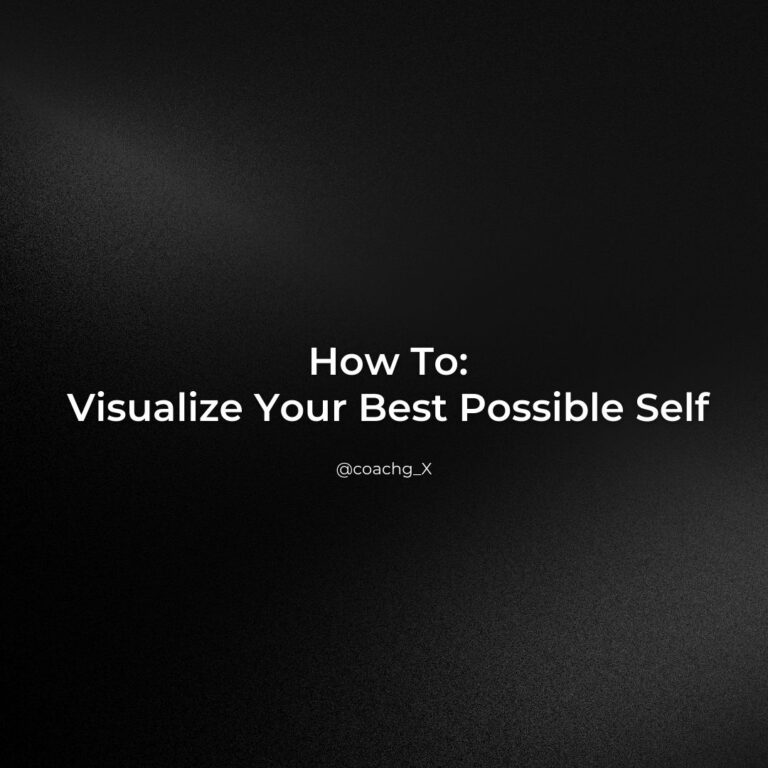
A Powerful Tool for Transformation
Visualization is more than a mental exercise; it’s a profound tool for transforming your mindset, rewiring thought patterns, and aligning your energy with the future you desire. Rooted in the principles of quantum psychology, visualization taps into your mind’s ability to create and shape reality. When you visualize your best possible self, you’re not just daydreaming, you’re training your brain to recognize, accept, and embrace positive change.
Why Visualization Works
Visualization operates on a principle grounded in both psychology and quantum theory. In simple terms, the brain processes mental imagery in a way that’s almost identical to actual experience. When you consistently visualize yourself as your ideal self (confident, resilient, and at peace), your mind becomes familiar with this version of you, and your thought patterns begin to shift to support this identity. Over time, your brain reprograms itself to align with these images, creating neural pathways that guide your actions and emotions in real life.
On an energetic level, visualization raises your vibration. Quantum theory suggests that energy attracts like energy, meaning that by visualizing yourself as a person filled with positivity and growth, you emit a frequency aligned with those qualities, drawing more positive experiences and relationships into your life.
Steps to Visualize Your Best Self
Developing a powerful visualization practice takes intention and focus. Here’s a step-by-step guide to help you get started:
1. Set a Clear Intention
The first step is to define what your “best self” means to you. Ask yourself questions like: What qualities do I want to embody? How do I want to feel in my day-to-day life? This could mean becoming more confident, compassionate, or disciplined. Setting a clear intention gives your visualization a purpose, directing your mind toward specific qualities that are meaningful to you.
2. Find a Quiet, Comfortable Space
Visualization is most effective when done in a relaxed, undisturbed environment. Sit in a comfortable position and close your eyes. Let go of any tension in your body by taking a few deep breaths. This not only prepares your body but also calms the mind, making it easier to focus.
3. Picture Your Best Self in Detail
Now, imagine yourself as the ideal version of who you want to become. Try to be as vivid and specific as possible—picture your posture, facial expression, and how you interact with others. See yourself confident, relaxed, and energized. If, for example, you aspire to be more compassionate, imagine yourself offering a kind word to someone in need or listening intently in a conversation.
4. Engage All Your Senses
To make your visualization more immersive, involve all of your senses. What would it feel like to embody these qualities? What sounds might surround you? Imagine the colors, scents, and physical sensations that accompany this image. Perhaps you hear affirming words or the sounds of nature, or you feel a warmth spreading in your heart as you embody kindness and self-compassion.
5. Connect with the Emotions of Your Best Self
Visualization is deeply powerful because it’s not just about the image but the emotion behind it. Focus on the feelings associated with this version of you. Is it peace, joy, or self-confidence? Allow these emotions to rise, and stay with them for a few moments. Feel how empowering it is to live as this best self.
6. Anchor the Visualization with Positive Affirmations
To reinforce your mental image, anchor it with affirmations that embody your best self. Affirmations like “I am becoming more confident every day” or “I am worthy of success and happiness” align your conscious thoughts with your visualization. These statements are more than just words, they signal to your subconscious that this is who you are becoming.
7. Practice Consistently
Consistency is key to successful visualization. Try to engage in this practice daily, even if only for a few minutes. Over time, the brain becomes more attuned to these images and begins to automatically align your actions and thoughts with this positive self-image. The more you practice, the stronger your mental picture will become.
Benefits of Visualizing Your Best Self
1. Shifts Negative Thought Patterns
Visualization rewires the brain to focus on positive traits and outcomes, making it harder for negative thought patterns to take root. By consistently seeing yourself as empowered and capable, you reduce the influence of self-doubt and pessimism.
2. Enhances Motivation and Confidence
Seeing yourself as your best self boosts motivation and confidence, giving you a greater sense of purpose. This mental practice bridges the gap between where you are and where you want to be, motivating you to take actionable steps toward your goals.
3. Supports Mental Health and Well-Being
Visualization offers a mental escape from depressive thought patterns. By dedicating time to imagine a better self and future, you create a mental space that fosters hope, optimism, and inner peace, qualities that are essential for emotional resilience.
4. Creates Alignment with Life Goals
As you visualize, you set in motion a mental and energetic alignment with your aspirations. This alignment draws supportive people, opportunities, and experiences into your life, helping to turn your ideal self into a lived reality.
Exercise: My Best Possible Self
Here’s an exercise to guide you through the visualization process. Set aside about 10 minutes each day for this practice.
- Write Down Your Ideal Self: Start by writing a detailed description of who you want to become. Be specific. Include physical traits (posture, expression), emotional traits (calm, confident), and mental qualities (focused, resilient).
- Example: “My best self wakes up each morning with gratitude and excitement. I face each day with curiosity and resilience. I feel grounded, capable, and compassionate.”
- Create Visual and Emotional Cues: Each day, take a few minutes to visualize this best version of yourself in a particular scenario, such as interacting with others, achieving a goal, or overcoming a challenge. Allow yourself to fully feel the emotions associated with each scene.
- Track Your Progress with Journaling: After each session, jot down any feelings, insights, or reflections. Tracking progress can reinforce the experience and help you notice positive changes as they arise.
- Reaffirm Daily: Repeat affirmations that align with your best self, like “I am growing stronger every day,” or “I am open to new opportunities.” These statements serve as reminders of your potential and reinforce your commitment to change.
Your Path to a Better Self
Visualization is a transformative tool that allows you to mentally rehearse a better future, creating neural pathways and energetic alignment with the person you aspire to become. By making this practice a part of your daily routine, you actively engage in your healing journey, breaking free from depressive cycles and nurturing a hopeful, resilient self-image. In time, visualization becomes not just an exercise but a way of living, helping you become the best version of yourself, one day at a time.
Let’s Keep the Growth Going
You’ve come this far for a reason. Stay connected and receive insights that meet you where you are—right in your inbox.
- Join our Newsletter -
Share:
Leave A Reply Cancel reply
Categories
- A Course in Miracles - Weekly Study Guide 2
- Ancient Wisdom 14
- Book Summaries 20
- Coach G's Journal 55
- Conscious Motherhood 7
- Conscious Pregnancy 2
- Conscious Women 30
- Gloria’s Journal 6
- Life Coaching 80
- Marriage & Relationship 20
- Parenting 5
- Productivity 11
- Quantum Psychology 75
- Self-Improvement 103
- Spirituality 57
- Top Business Coaching Strategies 9
Popular Posts
The Monster Within: Embrace Your Shadow and Discover True Strength
Tags
Useful Links
Quick Menu
Contact Us
- +971585541780
- info@coach-g.com
- Al Murjan tower, Al Marsa Street Dubai Marina





Comments